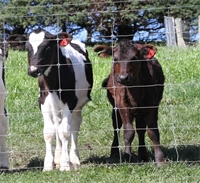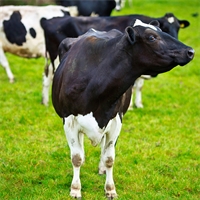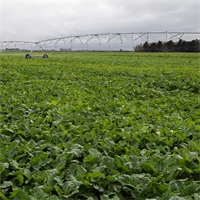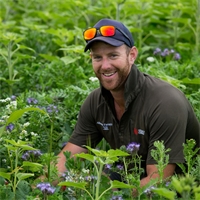30Nov
Introducing a better way to control forage brassica pests
THIS PROMOTIONAL FEATURE WAS PROVIDED BY NUFARM.
Forage brassicas are a great source of home-grown feed at times when pasture is not enough. They’re nutritious, palatable, and usually very cost-effective, plus they give you a chance to improve overall farm performance through sowing new pastures after they’ve been grazed. But two things can make it difficult to end up with the dry matter yield you originally planned for. The first is that insect pests like eating forage brassicas as much—if not more—than your animals do.
The second is that forage brassica leaves are naturally waxy, and difficult to wet. You’ve probably noticed that after rain or irrigation, water sits in discrete droplets on top of the leaves of a brassica crop. These droplets look little individual bubbles, and in technical terms they have high surface tension. Discrete droplets are prone to bouncing or rolling off the plant surfaces due to the angle of the leaf, movement of leaves during spraying, or if conditions are windy. Why is this a potential problem? It means that crop protection products mixed with water and applied to the crop to control insect pests, and stop them eating your valuable animal feed, often don’t cover the leaves thoroughly enough to catch all the insects.
By this time of the season, too, crops are well advanced, with plenty of canopy, and pests like caterpillars of white butterfly or diamond back moth have many places to hide where they are protected from the spray. They particularly like getting deep inside the crown of the plant, and on the underside of the leaves. Now, however, there’s a new product called Flume you can add to the spray mix to stop the liquid getting stuck in little discrete droplets on the leaves of the crop, and help it reach all the nooks and crannies where insect pests like to hide.
Flume, from Nufarm, is a super spreader. It reduces the surface tension of the spray droplets, flattens them out, and combines them into a thin, consistent film all over the surface of sprayed leaves, even wrapping around the underside. This technology is commonly used in horticultural crops, and it is very effective. Flume spreads so well that you don’t need as much water in the spray solution when you use it for ground applications. In fact, if you don’t adjust the amount of water applied per hectare, the spray can run right off the plant when Flume has been added If you’ve previously used 200-300 litres of water/ha to improve spray coverage on forage brassicas – even if only by a little bit – you need to reduce that with Flume. Appropriate water rates depend on the maturity of the crop, and the variety of forage brassica being grown. A minimum of 50% water reduction is typical, but it’s important to talk to your Ruralco Representative or your Nufarm Territory Manager to get the right rate for your situation. Flume is compatible with most commonly used insecticides.
To find out more about using Flume to protect your forage brassica yields this summer, talk to your Ruralco Representative or ask in store today.
Related

For the next three months we are looking at the final sprays for finishing off our cereal and grass ...
Read More

Calving will now be underway on most dairy farms, and there may well be some early lambs around on l...
Read More

There are number of diseases carried by livestock that can affect humans. These include leptospirosi...
Read More

This August, the Canterbury West Coast Air Rescue Trust hosted the Back to Base Challenge, an event ...
Read More

For the next three months we are looking at final sprays for finishing off cereal and grass seed cro...
Read More

Canterbury is becoming a hub for growing commitment to regenerative farming. The region’s tapestry ...
Read More